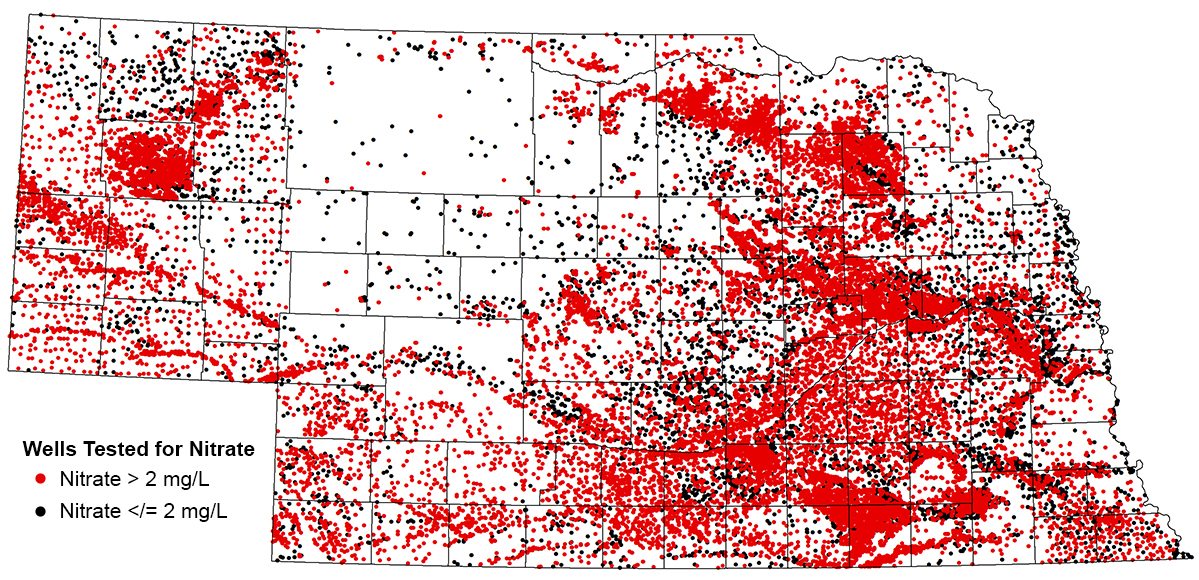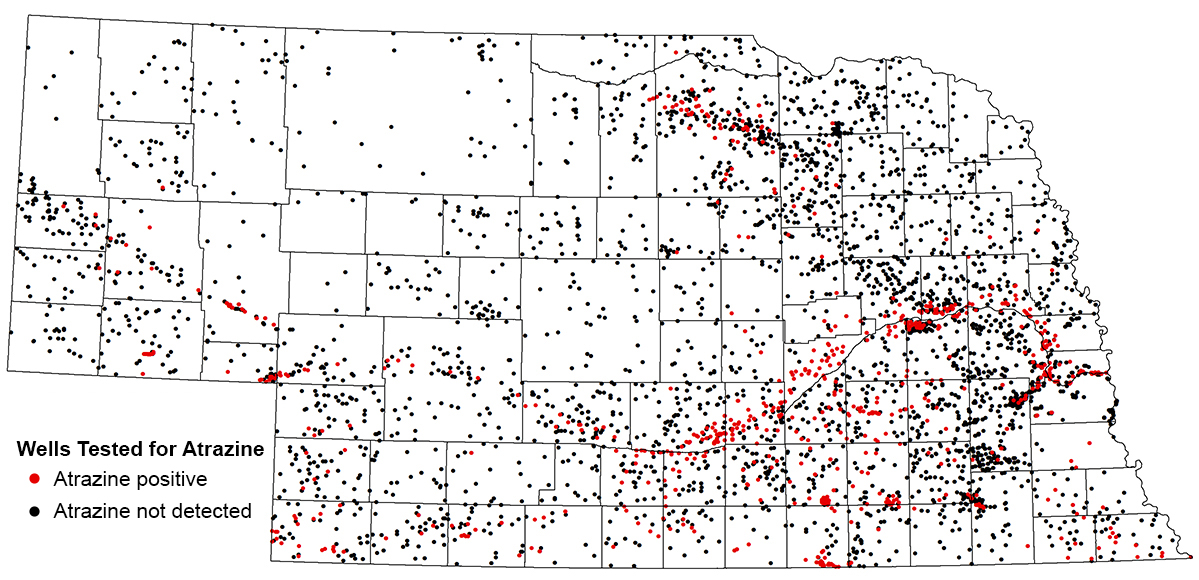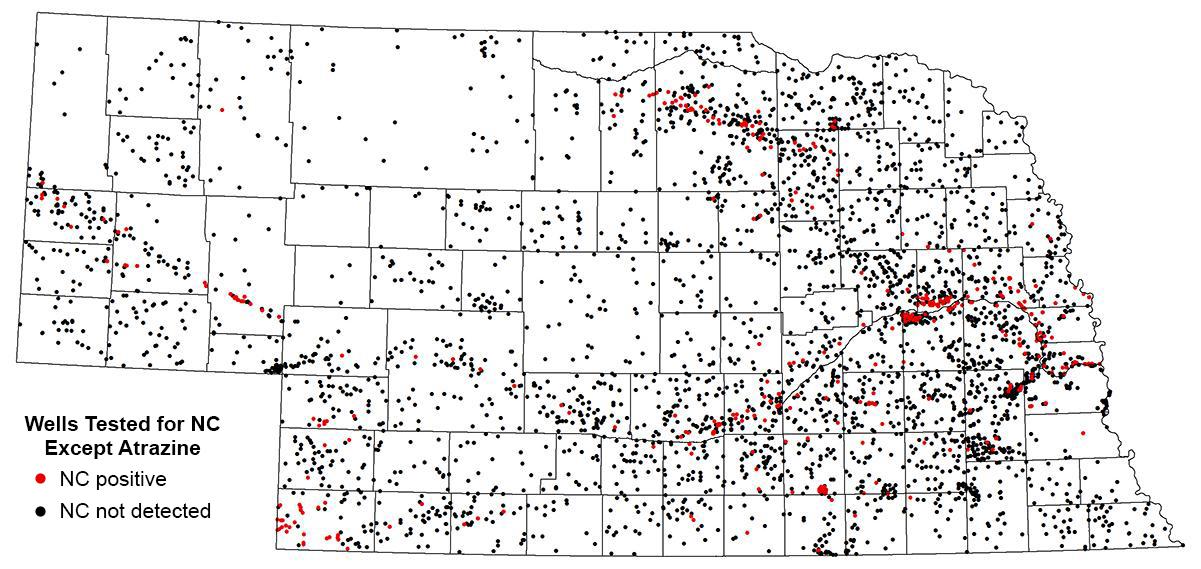Nebraska Wells
Note: Maps presented here only show wells tested for the contaminants of interest. Not all wells currently in use are included in the Quality-Assessed Agrichemical Contaminant Database for Nebraska Groundwater from which the data used to create the maps were obtained.
Wells Tested for Nitrate
Nitrate is the most common chemical contaminant in the world’s aquifers. Nitrate contamination in groundwater can originate from point and nonpoint sources but most contamination is from leaching of nitrogen-based fertilizer. Ingestion of nitrate through drinking water can cause low oxygen levels in the blood of infants, a potentially fatal condition. Maternal exposure to nitrate through drinking water has been linked to birth defects in offspring. The U.S. Environmental Protection Agency (USEPA) established a maximum contaminant level (MCL) for nitrate (NO3-N) in drinking water at 10 parts per million (mg/L). Nitrate concentration in natural groundwater is generally accepted to be 2 mg/L or less. The Wells Tested for Nitrate map shows the density of Nebraska wells with a nitrate concentration greater than 2 mg/L (18,843 wells of 25,811 sampled between 1977 and 2014).

Wells Tested for Atrazine
Atrazine is a widely used agricultural herbicide applied for weed control and one of the most commonly detected pesticides in U.S. drinking water. Exposure to atrazine is reported to cause endocrine disruption. Studies also show that exposure to atrazine during pregnancy is associated with a higher risk of adverse birth outcomes such as neural tube defects, limb deficiencies, preterm births, low birth weight, and neonatal death. The USEPA has set the MCL for atrazine at 3 parts per billion (µg/L). This MCL is more than 3,000 times lower than the nitrate MCL. The map of Wells Tested for Atrazine shows the distribution of wells in Nebraska with atrazine detections (916 wells of 4311 sampled between 1977 and 2014).

Wells Tested for Nitrosatable Agrichemicals
Nitrosatable compounds (NC) are chemicals that can react with nitrite to form N-nitroso compounds. Atrazine is a nitrosatable compound. Many N-nitroso compounds have been shown to cause cancer and birth defects in animal models. Maternal exposure to the combination of nitrate and NC may increase risk for birth defects in humans. Further research is necessary to evaluate whether exposure to the combination is more toxic than the individual chemical contaminants alone. The map of Wells Tested for NC illustrates the distribution of wells positive for potentially nitrosatable agrichemicals in Nebraska. Many nitrosatable agrichemicals are not regulated under the Safe Drinking Water Act so MCLs are not established.
Nitrosatable compounds (NC) are chemicals that can react with nitrite to form N-nitroso compounds. Atrazine is a nitrosatable compound. Many N-nitroso compounds have been shown to cause cancer and birth defects in animal models. Maternal exposure to the combination of nitrate and NC may increase risk for birth defects in humans. Further research is necessary to evaluate whether exposure to the combination is more toxic than the individual chemical contaminants alone. The map of Wells Tested for NC illustrates the distribution of wells positive for potentially nitrosatable agrichemicals in Nebraska. Many nitrosatable agrichemicals are not regulated under the Safe Drinking Water Act so MCLs are not established.

